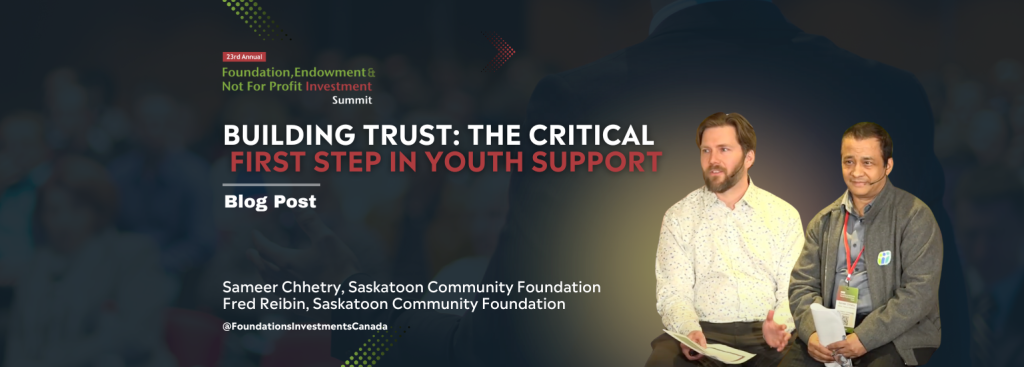Introduction: The Trust Deficit in Youth Support
In the intricate landscape of social services, we’ve discovered a fundamental truth: trust is the cornerstone of meaningful youth support. Our extensive research with the Saskatoon Community Foundation has unveiled a critical insight that challenges traditional approaches to youth intervention.
The Current Landscape: A System Broken Statistical Snapshot:
- 1,500 individuals self-identified as homeless in Saskatoon
- 42.5% of homeless individuals are youth
- 90% of homeless individuals are from Indigenous communities
- 48.8% of at-risk youth are couch surfing
These numbers aren’t just statistics—they represent real lives trapped in a cycle of uncertainty and disconnection.
The Anatomy of Trust: What Trust Looks Like in Practice
- Unconditional Availability
- Beyond traditional service hours
- 24/7 communication channels
- Responsive, not reactive support
- Holistic Understanding
- Recognizing individual narratives
- Avoiding one-size-fits-all solutions
- Respecting personal agency
- Trauma-Informed Approach
- Understanding systemic barriers
- Acknowledging historical contexts
- Creating safe, non-judgmental spaces
The System Navigation Model: A Revolutionary Approach Key Components:
- Dedicated trust-builders (system navigators)
- Personalized support pathways
- Continuous, flexible engagement
- Youth-led decision-making
Success Stories: Trust in Action Case
Study 1: Freya’s Journey
- Started as Youth Advisory Council member
- Pursued further education
- Returned as grant chair
- Now a board member
Case Study 2: Ariba Bilal
- YAC alumni
- Completed Masters in Public Administration
- Returned to support community-based organizations
- Helps write grant applications
Psychological Foundations of Trust Neurological Insights:
- Consistent support rebuilds neural pathways
- Predictability reduces stress responses
- Positive connections rewire trauma responses
Practical Strategies for Building Trust For Organizations:
- Active Listening Protocols
- Non-Hierarchical Communication
- Transparent Decision-Making
- Continuous Feedback Mechanisms
For Individual Supporters:
- Practice radical empathy
- Suspend judgment
- Maintain consistent boundaries
- Demonstrate reliability
Technological Innovations Digital Trust-Building Tools:
- Secure messaging platforms
- Anonymous support channels
- Flexible communication options
- Data-protected environments
Measuring Trust: Beyond Traditional Metrics
Emerging Evaluation Frameworks:
- Relationship durability
- Self-reported well-being
- Long-term life trajectory tracking
- Peer network stability
Challenges and Opportunities
Potential Barriers:
- Systemic mistrust
- Resource limitations
- Institutional inertia
Transformative Potential:
- Breaking generational cycles
- Empowering youth leadership
- Rebuilding community connections
Policy Implications
Recommended Systemic Changes:
- Flexible funding models
- Youth-led program design
- Intersectional support strategies
Conclusion: Trust as a Catalyst for Change
Trust isn’t a soft skill—it’s a powerful intervention strategy. By reimagining support through a lens of genuine connection, we can create transformative pathways for youth.
Call to Action:
- Support youth-led initiatives
- Challenge existing support models
- Invest in relationship-building
This blog is based on the 2025 FENI Summit session featuring Sameer Chhetry and Fred Reibin of Saskatoon Community Foundation.


